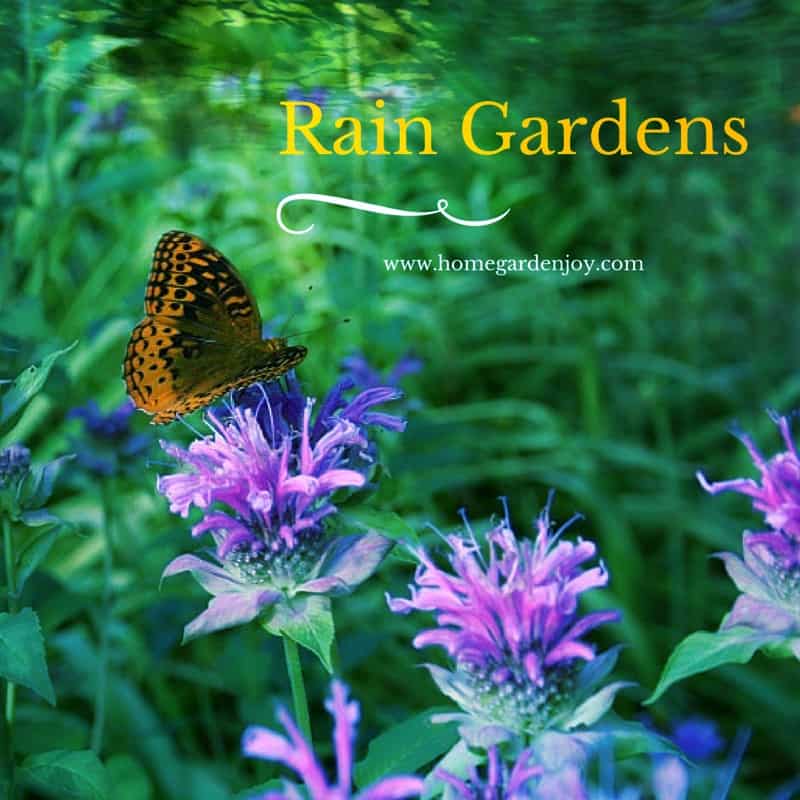 What is a rain garden? Rain gardens are a simple way that suburban and urban homeowners can plant a beautiful garden and help keep the water supply clean and safe.
What is a rain garden? Rain gardens are a simple way that suburban and urban homeowners can plant a beautiful garden and help keep the water supply clean and safe.
A rain garden is a small garden planted in a rainwater run-off area in your yard. A typical rain garden may be planted on the lawn in a shallow spot where water naturally collects, or at the end of a downspout. The ground is dug down a bit, and deep-rooted native plants are planted in the rain garden. When the rain water washes off the roof, driveway or walkways, it collects in the garden area. The plants hold the soil in place and provide time for the water to slowly seep into the soil.
Soil acts like a filter, allowing rainwater to replenish ground water supplies. Forests, fields and meadows provide such a service in rural areas. In urban and suburban areas, however, construction of roads, parking lots, shopping malls and other man-made areas have diminished the open spaces needed to clean and replenish ground water supplies. Water rushes from the flat roofs of big buildings like malls and grocery stores down drain pipes where it rushes over a concrete parking lot, collecting trash, dripped oil and other spills. This now contaminated water spills into sewers, where more garbage collects and ferments, including natural items like leaves and unnatural items like candy wrappers and trash. Then the water from the sewers flows into sumps, rain water collection stations, rivers or oceans. Most is screened free of trash, but screens can’t remove oil, gasoline, and other spills that water flowing over concrete parking lots and roadways picks up.
Rainwater provides mankind with all of its freshwater in some way, shape or form. It is said that 97% of the world’s water supply is salt water, and that 3% is freshwater. But within that 3%, about 2% is tied up in glaciers and the arctic ice caps, leaving humans with just 1% of fresh water available for all of our needs. We need to safeguard our fresh water supplies!
A rain garden may seem like a small step, but think about protecting pollinators. For years, homeowners sprayed their gardens with pesticides, never dreaming that they may have contributed to honey bee hive collapse disease. Of course there are probably more reasons why the disease developed as it did, and big agricultural business and farms spray a lot more than one suburban homeowner sprays in a given year. But multiply one suburban home with millions more like it around the United States, and you can see how one person’s actions, if copied by others, end up creating a massive movement in the environment.
Your home rain garden may be just a small patch of earth devoted to a little rain collection station, but if others create a similar rain garden, then we can make a huge difference in the quality and quantity of fresh water available for generations to come.
My own perennial garden acts as a rain garden. Our water well is stationed in the middle of the perennial garden. The garden itself is on a steep slope off of the driveway. During a heavy rain, water runs down the driveway, which is at about a 10% grade, and some flows into the perennial garden. We never have a problem with runoff from the perennial garden because the plants and rock borders capture and hold the rainwater sufficiently.
I’ve gathered some suggested books available on Amazon for you if you would like to learn more about rain gardens. (Please note that I am an Amazon affiliate; if you click the pictures below and purchase something from Amazon, I make a small commission, which does not affect your price in any way. Thank you.)
If the idea of a rain garden intrigues you, then let’s get started.
How to Build a Rain Garden
Rain Garden Location
- Plan your rain garden so that it is at least 10 feet or more away from your home. Otherwise, the collected rain water may actually seep into the foundation.
- Before digging a new garden, know where your power and other utility lines are buried. When in doubt, call the utility company for advice.
- Don’t build rain gardens over septic areas – you’ll just fill your septic tank too soon with rain water, and it won’t go into the ground water.
- Full sun or partial sun is the best sunlight to grow rain garden plants.
- Avoid digging near big trees. Their roots will be hard to dig around without disturbing.
- Choose an area that gets plenty of rain run off.
Constructing a Rain Garden
Once you’ve chosen your location, it’s time to dig! Rain gardens should be sized according to the run off area. To estimate the size of your rain garden, use the following formula, provided by the North Carolina Cooperative Extension:
- Estimate the square footage of your roof.
- Estimate the percent of roof feeding into your gutter and downspout.
-
Divide this number by 20.
- That gives you the area for a garden dug to a depth of 6 inches.
- If you divide the estimate number by 10, that gives you the depth to dig a garden by 3 inches deep.
Use string or marking paint to outline your garden. Remember that a flowing, rounded shape looks more natural than an angular shape. I used a garden hose to outline my new garden areas. It’s easier to work with than string and less expensive than paint.
Dig the garden four to six inches deep. The center should be slightly deeper, like a bowl or a cup, to collect the rain water. If you’re digging the garden on a slope, use some of the soil you dig from the hole to make a birm or soil wall on the downward side so that the little garden plot retains water.
Add a layer of compost to the garden area before planting.
Plant a selection of native plants suitable for a rain garden in your area, then fill the area in with 2-3 inches of mulch. Plants are dug into the base of the garden area that you’ve uncovered; they should be planted flush with the bottom of the hole. The excess soil is NOT filled back into the rain garden but used for the birm. Mulch over the top allows rainwater into the garden and keeps the area moist.
Plants for Rain Gardens
What should you plant in your rain garden? Plant choices depend on your gardening zone and light conditions.
Here are some perennial suggestions from the Rain Garden Alliance that I like for Virginia and mid Atlantic gardens:
- Candytuft
- Daylily
- Hosta
- Sedum “Autumn Joy”
- Monarda (Bee Balm)
- Joe Pye Weed
- Aster
- Milkweed
- Ironweed
- Tall sunflower and tall coreopsis
Add interest and height with a variety of trees and shrubs too. Some great shrubs for a rain garden include hydrangea, lilac and Rose of Sharon. Trees that do well in rain garden areas include gray bark dogwood, white oak, Kentucky coffee tree, and many others. See the Rain Garden Alliance suggested plant list for more choices.
Your rain garden will contribute clean water to ground water and help keep the environment beautiful.
I hope you’ve enjoyed this introduction to rain gardens. For more information, see the resources below.
- VIRGINIA specific: James River Association – How to Build a Rain Garden
- Free booklet from the Wisconsin Department of Natural Resources: Rain Gardens (download it from their website)
- Rain Gardens in Texas
- Three Rivers Rain Garden Alliance

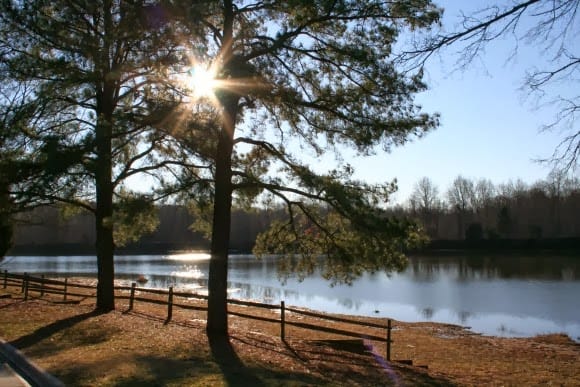

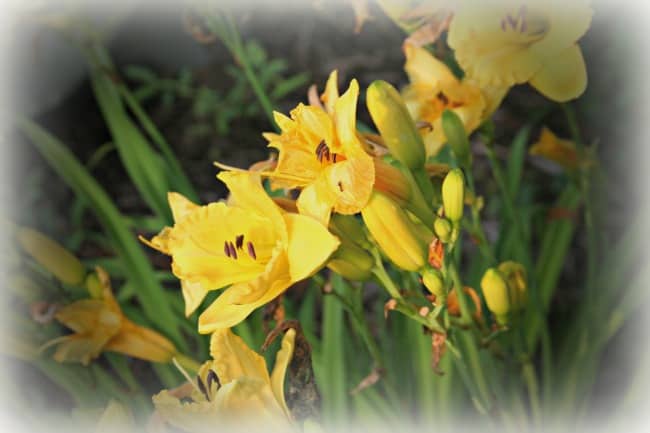

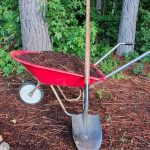

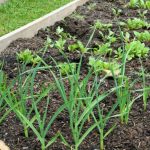
Thank you so much for this. Never knew what a rain garden exactly was. Now know and it’s lovely! Saw your post @Sunday’s Best.
Kristine 🙂